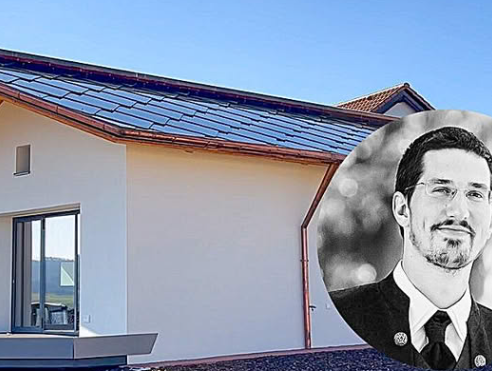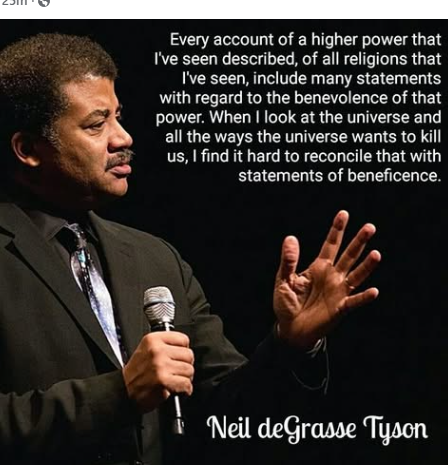 The last two popes have brought a wonderful array of humanitarian values to Catholicism, but as shown at left, some church officials are not completely on board.
The last two popes have brought a wonderful array of humanitarian values to Catholicism, but as shown at left, some church officials are not completely on board.
Here’s a question, even if you accept the dubious claim that the LGBTQ community tends to be atheistic. How does having atheists in your church inflict damage? Isn’t the point to convert folks?
The Catholic Church Is Making Progress, But It’s Not Instantaneous
Renewable Energy
Empire Offshore Progress, New RWE Offshore Farm Approved
Weather Guard Lightning Tech

Empire Offshore Progress, New RWE Offshore Farm Approved
Allen covers forecasts for 46 GW of new US wind capacity by 2029, driven by data centers and reshoring. Plus Equinor’s Empire Wind project stays on track for late 2026, RWE gets approval for the Five Estuaries offshore wind farm in the UK, and a Scottish startup raises funding for modular multi-rotor turbines.
Sign up now for Uptime Tech News, our weekly Substack newsletter on all things wind technology. This episode is sponsored by StrikeTape by Weather Guard Lightning Tech. Follow us on YouTube, Linkedin and visit Weather Guard on the web. And subscribe to Engineering with Rosie on YouTube! Have a question we can answer on the show? Email us!
There is an old saying about the wind. You cannot see it. You cannot hold it. But you can harness it. And right now, people around the world are doing exactly that.
After years of sluggish growth, American wind power is waking up. Wood Mackenzie reports the United States will add more than seven gigawatts of new wind capacity in 2025. That is a thirty-six percent jump from this year. And by 2029? Forty-six gigawatts of new capacity coming online.
Why now? Because after a decade of flat electricity demand, America is hungry for power again. Data centers. Electric vehicles. Factories returning home. Demand is growing three percent annually now, up from less than one percent before.
Out West, they are leading the charge. Wyoming. New Mexico. Colorado. Pattern Energy’s three-point-five gigawatt SunZia project in New Mexico alone will make them the top wind installer in 2026. And Invenergy’s Towner Energy Center in Colorado? Nine hundred ninety-eight megawatts. The single largest project expected to come online in 2027.
But here is where it gets interesting. Off the coast of Long Island, a different kind of story is unfolding. The Empire Wind project. Eight hundred ten megawatts of offshore wind power. Enough to power half a million homes in Brooklyn. Norwegian energy giant Equinor is building it. And despite the political headwinds blowing against offshore wind, New York is standing firm. First electricity expected by late 2026.
Across the Atlantic, Britain just gave the green light to something bigger. The Five Estuaries offshore wind farm. Seventy-nine turbines off the coast of Suffolk and Essex. At least twenty-three miles from shore. German energy company RWE is building it. When complete, it will power one million British homes. One million.
Meanwhile, Europe is putting its money where the wind blows. Austria’s Erste Group just signed a two hundred million euro deal with the European Investment Bank. Part of an eight billion euro program to strengthen European wind turbine manufacturers. As Karl Nehammer, the bank’s vice president, put it: Europe is serious about keeping wind manufacturing jobs at home.
Now… You might think wind power is all about going big. Massive offshore farms. Turbines taller than skyscrapers. But in Stirling, Scotland, three entrepreneurs have a different idea. Adam Harris. Paul Pirrie. Peter Taylor. They founded a company called Myriad Wind Energy Systems.
Their invention? Small modular wind turbines. Multiple rotors mounted in a framework. No cranes needed. No special roads. Install them on a farm. On a factory. On a remote site where traditional turbines could never go. This week, they secured eight hundred sixty-five thousand pounds in seed funding. Led by Tricapital Angels. Their first prototype? A fifty-kilowatt unit scheduled for 2026.
From Wyoming to New York. From Essex to Austria. From the North Sea to the Scottish Highlands. Wind energy is not waiting for permission. It is happening. Forty-six gigawatts in America alone by decade’s end. Billions of euros flowing in Europe. Innovators in Scotland proving that sometimes, smaller is smarter.
You cannot see the wind. But you can see what it is building.
That’s the wind industry news for the 22nd of December 2025. Happy Holidays folks, wherever you may be.
Renewable Energy
Manufacturer of “Micro-Wind” Turbines Says, “Start Generating Wind Power on Your Roof Today!”
 If you’re interested in this, you might want to ask yourself:
If you’re interested in this, you might want to ask yourself:
Do I have good wind conditions 10 – 20 feet off the ground, surrounded by other houses and trees?
Mustn’t there be a reason that real wind farms are cited away from buildings, and the turbines are hundreds of feet in the air?
Why did the small wind industry vanish about 15 years ago?
Manufacturer of “Micro-Wind” Turbines Says, “Start Generating Wind Power on Your Roof Today!”
Renewable Energy
Astrophysics and Theology
 At left are the words of Neil deGrasse Tyson, noted astrophysicist and atheist.
At left are the words of Neil deGrasse Tyson, noted astrophysicist and atheist.
His point here seems to be that a loving god would protect us from the threats we face from all corners of the universe.
This is a very common theme in theology: How is it possible that a loving god doesn’t help good people, while allowing evil to prosper?
But it gets worse. Is it a human concept to sentence the unfaithful to suffer eternal torture? Should unfaithful wives be stoned to death?
The list goes on and on.
-
Greenhouse Gases4 months ago
Guest post: Why China is still building new coal – and when it might stop
-
Climate Change4 months ago
Guest post: Why China is still building new coal – and when it might stop
-
Climate Change2 years ago
Spanish-language misinformation on renewable energy spreads online, report shows
-

 Greenhouse Gases2 years ago
Greenhouse Gases2 years ago嘉宾来稿:满足中国增长的用电需求 光伏加储能“比新建煤电更实惠”
-
Climate Change Videos2 years ago
The toxic gas flares fuelling Nigeria’s climate change – BBC News
-

 Climate Change2 years ago
Climate Change2 years ago嘉宾来稿:满足中国增长的用电需求 光伏加储能“比新建煤电更实惠”
-

 Carbon Footprint2 years ago
Carbon Footprint2 years agoUS SEC’s Climate Disclosure Rules Spur Renewed Interest in Carbon Credits
-
Climate Change2 years ago
Why airlines are perfect targets for anti-greenwashing legal action


